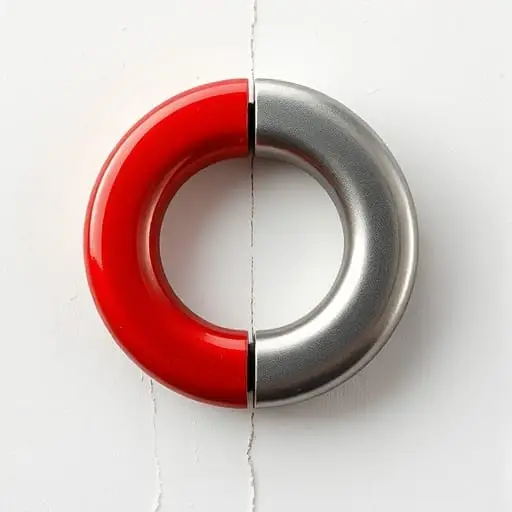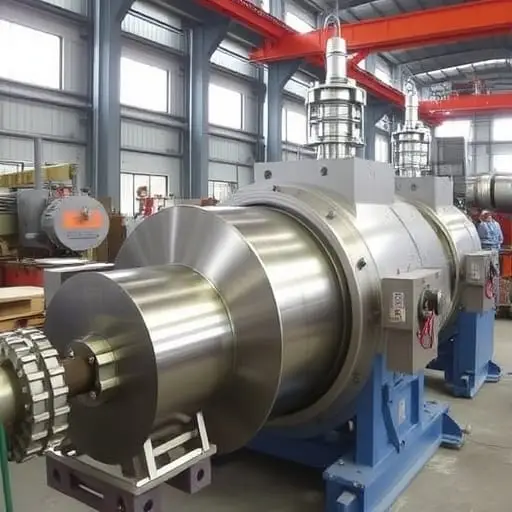What Can Be Separated by Magnets?
Magnets have been integral tools in various industries, from recycling to mining, thanks to their unique ability to attract and separate different materials. Magnetic separation is a widely used method in many fields, from metallurgy to waste management, to separate ferrous (iron-based) and non-ferrous metals, as well as other materials. In this article, we will explore what materials can be separated by magnets, the technology behind magnetic separation, and the advantages of using magnets for separation processes.
Table of Contents
- Introduction to Magnetic Separation
- How Do Magnets Work in Separation?
- What Can Be Separated by Magnets?
- Ferrous Metals
- Non-ferrous Metals
- Plastics and Other Materials
- Applications of Magnetic Separation
- Recycling Industry
- Mining Industry
- Food Industry
- Pharmaceuticals and Biotech
- Advantages of Magnetic Separation
- Oromineral Eddy Current Separator Machine: A Game-Changer
- High Separation Efficiency
- Robust Construction
- Easy Maintenance
- Customizable Options
- Common FAQs About Magnetic Separation
- Conclusion
Introduction to Magnetic Separation
Magnetic separation is a process in which magnetic materials are separated from non-magnetic materials using a magnetic field. This technique relies on the magnetic properties of certain materials, which allows for the efficient separation of materials with different magnetic susceptibilities. Magnetic separation is particularly useful in industries like mining, recycling, food processing, and pharmaceuticals, where the purity of materials is important.
The basic principle behind magnetic separation involves the use of a magnetic field to pull materials that are magnetic towards the source of the field, leaving the non-magnetic materials behind. The types of materials that can be separated depend on their magnetic properties, such as ferromagnetic, paramagnetic, and diamagnetic.

How Do Magnets Work in Separation?
Magnets operate by generating a magnetic field that attracts materials with magnetic properties. When materials pass through the magnetic field, magnetic particles are attracted and separated from the non-magnetic materials.
Types of Magnetic Materials
- Ferromagnetic Materials: These are strongly attracted to magnets. Iron, nickel, cobalt, and their alloys are examples of ferromagnetic materials.
- Paramagnetic Materials: These materials are weakly attracted to magnets but not as strongly as ferromagnetic materials.
- Diamagnetic Materials: These materials are weakly repelled by magnets and are generally not affected by magnetic fields.
Magnetic Separation Devices
Magnetic separation involves the use of different types of equipment to separate materials. Some common devices include:
- Magnetic Pulley: Used in conveyor systems to separate ferrous metals from non-ferrous materials.
- Eddy Current Separator: Separates non-ferrous metals from other materials using a magnetic field and induced eddy currents.
- Overhead Magnetic Separator: Used in industries like recycling to separate ferrous metals from the waste stream.
- Magnetic Drum Separator: Commonly used in bulk material handling to separate magnetic materials from non-magnetic ones.
What Can Be Separated by Magnets?
Magnets are highly effective at separating various materials, mainly focusing on metals and other magnetic elements. Let’s explore the different types of materials that can be separated using magnets.
1. Ferrous Metals
Ferrous metals, such as iron and steel, are highly magnetic, which makes them easy to separate using magnets. These materials are attracted strongly to magnets and are commonly separated in industries like recycling and mining.
Examples of Ferrous Metals:
- Iron
- Steel
- Cast iron
- Certain alloys containing iron
Application: In the recycling industry, magnets are used to separate ferrous metals from mixed waste streams, making it easier to recover these valuable metals.
2. Non-ferrous Metals
Non-ferrous metals, which do not contain iron, are generally not magnetic by themselves. However, advanced magnetic separation techniques, such as eddy current separation, can be used to separate non-ferrous metals from other materials.
Examples of Non-ferrous Metals:
- Aluminum
- Copper
- Zinc
- Lead
- Brass
- Gold and Silver (in some specialized cases)
Application: Eddy current separators, like the Oromineral Eddy Current Separator Machine, are widely used to separate non-ferrous metals in recycling and mining. The machine uses high-speed rotating magnets to induce eddy currents in non-ferrous metals, causing them to be repelled from other materials.
3. Plastics and Other Materials
While most plastics are non-magnetic, some plastics can be magnetically separated due to the presence of metal additives or coatings. Magnets can also be used to remove metal contaminants from plastic waste during recycling.
Application: In the recycling industry, magnetic separation is used to separate plastic materials that may have metal content or contamination, enhancing the purity of the recycled product.
Applications of Magnetic Separation
Magnetic separation is a versatile process with numerous applications across different industries. Below are some of the key sectors where magnetic separation plays a crucial role.
1. Recycling Industry
Magnetic separation is extensively used in the recycling industry, especially for sorting metals from waste streams. It allows for the efficient recovery of valuable metals such as aluminum, copper, and steel, and helps improve the overall quality of recycled materials.
2. Mining Industry
In the mining sector, magnetic separation is used to extract valuable metals from ores and separate impurities. It helps recover precious metals like gold, silver, and copper, and also removes unwanted ferrous materials.
3. Food Industry
Magnetic separation is also used in the food industry to remove metal contaminants from food products. Magnetic separators are placed in food processing lines to ensure that metal particles are removed before the products are packaged.
4. Pharmaceuticals and Biotech
Magnetic separation is used in biotechnology and pharmaceuticals for applications like cell sorting, protein purification, and separating biological samples. Magnetic beads and nanoparticles are often used for these processes.
Advantages of Magnetic Separation
Magnetic separation offers numerous advantages, including:
- High Efficiency: Magnetic separation allows for the quick and efficient extraction of metals and other materials, making it ideal for bulk processing.
- Cost-Effective: Using magnets for separation is often more cost-effective than other methods, as it requires minimal energy and equipment maintenance.
- Environmentally Friendly: Magnetic separation helps reduce waste by recovering valuable materials that can be recycled or reused.
- Low Maintenance: Magnetic separators are generally easy to maintain, with minimal moving parts and long operational lifespans.
Oromineral Eddy Current Separator Machine: A Game-Changer

The Oromineral Eddy Current Separator Machine is a cutting-edge solution for separating non-ferrous metals in recycling and mining applications. It utilizes the principle of eddy current separation, a powerful method for sorting non-ferrous metals from other materials with high efficiency.
1. High Separation Efficiency
The Oromineral Eddy Current Separator is designed to maximize separation efficiency by using an adjustable magnetic field that ensures precise separation of non-ferrous metals, even in complex waste streams. This feature allows businesses to recover valuable metals quickly and effectively.
2. Robust Construction
Built with high-quality materials, the Oromineral Eddy Current Separator is designed for durability and long-term performance. Its robust construction ensures that the machine can withstand harsh operational conditions in recycling and mining environments.
3. Easy Maintenance
With an emphasis on low maintenance, the Oromineral Eddy Current Separator is designed to minimize downtime. The machine’s components are easily accessible, allowing for quick maintenance and repair when necessary.
4. Customizable Options
The Oromineral Eddy Current Separator offers customizable options to meet specific application requirements. Whether you are dealing with mixed metal waste or specialized materials, this machine can be adapted to suit your needs.
Common FAQs About Magnetic Separation
1. What types of materials can be separated by magnets?
Magnets can separate ferrous metals (e.g., iron, steel), non-ferrous metals (e.g., aluminum, copper), and materials that contain metal components. They are also used in recycling and food processing to remove metal contaminants.
2. How do eddy current separators work?
Eddy current separators work by creating a rapidly rotating magnetic field, which induces electric currents (eddy currents) in non-ferrous metals. These eddy currents cause the metals to be repelled, separating them from other materials.
3. Can magnets separate all metals?
No, magnets are primarily effective at separating ferrous metals (those containing iron). Non-ferrous metals, such as aluminum and copper, require specialized techniques like eddy current separation.
Conclusion
Magnetic separation is an essential technology for efficiently separating materials in various industries, from recycling to mining. By understanding the materials that can be separated by magnets and the different magnetic separation methods available, businesses can improve efficiency, reduce costs, and enhance their product offerings. The Oromineral Eddy Current Separator Machine is a prime example of how advanced magnetic separation can
revolutionize industries, providing higher separation efficiency and long-term reliability.
As you explore magnetic separation for your business needs, understanding the technology and selecting the right machine is critical to maximizing performance and profitability.





